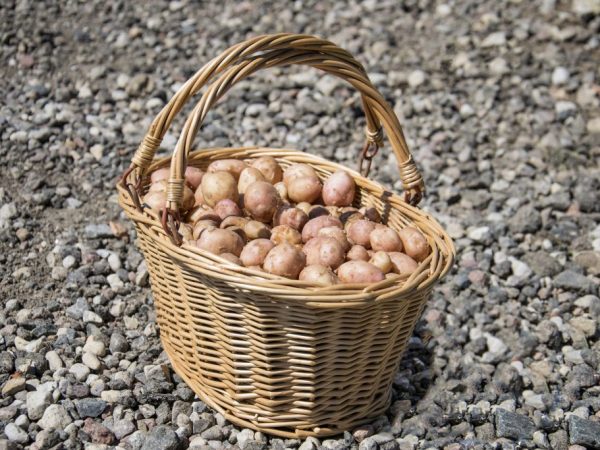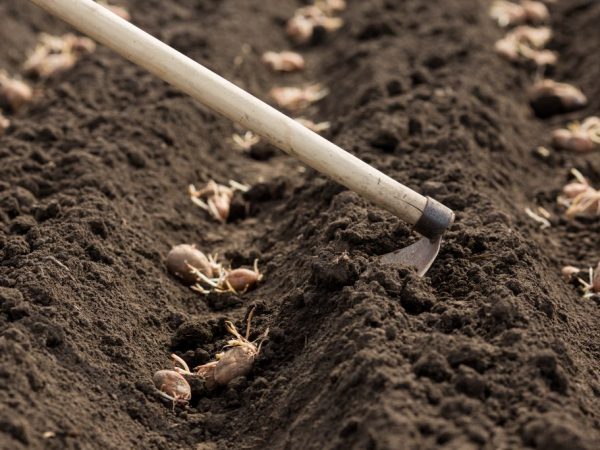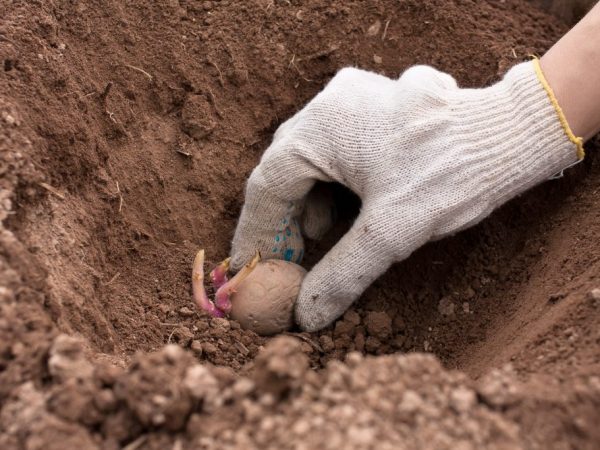How to plant potatoes correctly
When growing vegetables, you need to know the needs of each crop. To ruin the entire crop, one mistake is enough at the first stages of plant development. How to plant potatoes correctly? Let's take a closer look at the most popular methods available at home.

Plant potatoes correctly
Preparing for landing
Root crops are a favorite crop of domestic summer residents and farmers, therefore, unpretentious tubers are grown on almost every land plot. But before harvesting a good harvest, it is necessary to carry out preparatory procedures. The more the farmer spends his energy at the beginning, the less he will be concerned about problems in the future.
Selection of tubers
Before planting potatoes, it is necessary to start selecting suitable tubers in the fall. Experienced farmers prefer to take specimens from the sturdiest and most prolific shrubs. Small and coarse material is not suitable. If the size of the root vegetables is less than a chicken egg, then the plant will not have enough nutrients to develop. Huge vegetables take up a lot of space in the garden, so they are also discarded.
It is better to plant potatoes selected for planting under a canopy or in the shade of a tree. Toxic corned beef forms inside the seeds, which creates a natural protection during storage. The high concentration of poison in the pulp makes such specimens suitable exclusively for growing. In winter, raw materials are stored separately from the harvested crop.
Before spring work, it is necessary to sort out the potatoes a second time. The frozen and shriveled ones are thrown away, and fresh, green tubers can be used for planting in the ground. 30 days before the expected date, the material is germinated, tempered and treated with chemicals.
Site selection
A place for a future good harvest is also prepared in the fall. The best option would be a well-lit area, where there are no large trees and a fence. The earth is dug up, weeds are removed and fertilizers are applied. Before the start of spring agricultural work, the procedure is repeated.
Without knowledge of the rules of crop rotation, it is difficult to get healthy plants. No matter how much the beginners experiment, however, you cannot plant potatoes in the beds together and after nightshades, sunflowers and sorghum. They share diseases and pests that weaken crops. Recommended predecessors include:
- pumpkin;
- cucumbers;
- legumes;
- cabbage.
If it is not possible for the land to rest, then we advise you to sow the area with siderates after harvesting. Plants enrich the soil with minerals and protect it from deflation. Good to use after potatoes:
- buckwheat;
- alfalfa;
- oats;
- wheat;
- sweet clover.
In a summer cottage, where it is difficult to find a lot of space for planting, farmers compactly plant the entire usable area. An improperly selected neighborhood will become noticeable in a few months - the development of greenery will worsen and the formation of tubers will slow down. It is better to arrange beds next to potatoes with:
- beans;
- beets;
- carrots;
- calendula.
Traditional planting methods

We lay out the potatoes
How to properly plant potatoes at home? Domestic farmers prefer to use time-tested methods. Each of them has its own characteristics, suitable for a particular region.
"Under the shovel"
If the soil in the area is loose and moisture-consuming, then a smooth landing would be the best option. To keep the rows even, the distance between the beds is marked with twine. A person moves around the garden, making small holes, and then lays down the tubers.
One of the simplest methods is preferred by farmers due to the fact that it requires any technical adaptations. Previously, our compatriots used the "shovel" method for decades. The distance between the rows of seeds is 60-70 cm, and between the tubers - from 0.25 to 0.35 m.
Ridge landing
It is better to plant potatoes in special hills made from soil using a tractor. The height of such a structure is about fifteen centimeters. The method is relevant for areas with closely lying groundwater. Applying the technology, root crops do not suffer from excess moisture and lack of natural air exchange.
At first, the place is plowed evenly with equipment, after which they use the nozzles for hilling. Ridge planting minimizes manual labor, therefore it is popular among both summer residents and large farmers. The disadvantage of this technique is the rapid drying of the soil in the heat, so you have to increase the amount of irrigation or cover the sides of the beds with boards. Perfect for northern regions.
In the trenches
Arid areas with sandy soils that do not retain moisture well require different cultivation methods. It is important to keep not only the optimal amount of liquid in the ground, but also to keep the seeds from overheating. We recommend planting potatoes in the grooves dug with a Fokin flat cutter or a hoe according to the scheme (in cm):
- depth - 12;
- the gap between the rows is 70;
- distance between tubers - 30.
On dense soils or areas with close groundwater, do not use furrow planting. Due to poor oxygen access, tubers of any kind will suffocate or rot in the ground. In addition, there is a risk of spreading fungal diseases.
Unconventional landing methods
Thanks to the ingenuity of domestic farmers, many new methods of growing root crops have appeared. If you plant sprouted potatoes in unusual places, then you can save usable area per hundred square meters and free up time for care. Technologies are easily changed to solve a particular problem.

Choose the method that suits you
Planting under straw
Due to its simplicity and accessibility, the Kartsev method is gaining immense popularity among summer residents. The essence of the invention is that instead of soil, the potatoes are covered with a layer of straw. Dry grass is added as the shoots grow. Large roots do not get dirty in the soil and are easy to clean.
The disadvantage of the new technology is the poor water absorption of the materials, as a result of which it is necessary to water more often. In the heat, rodents start in the plant residues, which can destroy the crop. Agrarians recommend using the method on virgin soil or on heavy soils. This eliminates the need for preliminary digging and facilitates the processing of the site in the future.
Tubers can be laid out both on a flat surface in hay and in special holes. If there is not enough dry straw, then the planting material is sometimes withered mowed grass, pulled out weeds. There is no special care for the planting, so it is worth experimenting with at least one hundred square meters.
In boxes
Laborious preparation for planting is compensated by minimal maintenance requirements and excludes getting frozen crops in cold weather. Growing in boxes allows you to get a return twice as much as with standard methods. This does not require weeding and hilling.The beds are used for several years, adding the mixture as it settles.
How to plant potatoes in a box so that they grow without problems? At home, containers are collected from the material at hand, the height of which is 0.30 m and the width is 100 cm, the length is chosen at the request of the summer resident. Free space is filled with organic matter and soil. Tubers in boxes are staggered from each other.
Under the film
After preliminary digging, black polyethylene or non-woven material is spread on the site. To prevent the structure from being blown away by the wind, the ends are fixed. Cross-shaped holes are cut along the markings (in rows or "checkerboard"). The land is chosen, forming a hole, seeds are laid and shallow soil.
The main advantage of the new method is the absence of the need for weeding and hilling. Most often it is used in order to properly plant young potatoes. The number of root crops and their taste characteristics increase. The ground under the film gets very hot, so the technology is dangerous in hot regions.
Into the mounds
On one hundred square meters of a summer cottage, it is necessary to compactly place a lot of vegetables, so the method of constructing hills will be relevant. A circle up to two meters in diameter is drawn on the selected soil. In a circle at a distance of 40 cm from each other, holes are made into which the tubers are folded. The seeds are covered with soil, and as the greenery grows, they are piled up in the form of a high mound.
Thanks to the original location, it is possible to achieve a good harvest in a tiny area. Experimental bed maintenance is no different from traditional methods. To prevent water from draining, an irrigation crater is formed in the middle of the structure. The technology is not suitable for growing in cold regions.
Before winter
Can potatoes be planted in August? Winter plants make better use of spring moisture, so they manage to form tubers before the onset of heat. It is noticed that if the culture was buried at the end of summer, then development stops before the appearance of phytophthora, which means that no chemical treatment is required.
Planting for the winter is a very risky undertaking and it is not worth spending all the seeds on experimenting. The green material is buried intact into the fertilized loose soil. Since cut potatoes quickly rot and deteriorate, using this method should not be planted with a cuttings. Additionally, the bed is mulched with a layer of straw or peat (at least 10 cm). The coating creates a thermal effect and smooths out temperature drops.
When to plant
The best time to plant roots is mid-spring. Experienced farmers consider the ideal period when the leaves on birches have time to open up to the size of a penny. After a couple of days, the soil at a depth of ten centimeters is already warming up to 8 degrees. Anyone who has carried out agricultural work earlier may suffer from recurrent cold weather and the frost-bitten planting will disappear.
In the northern regions, you have to wait until the ground temperature reaches 12 degrees. The indigenous peoples have a sign: if you sit down on the ground and it is not cold to the "fifth point", then it is allowed to plant tubers. Most often, the period comes after Easter and the May holidays. To avoid frost damage, we recommend choosing resistant seed varieties.
Late work in the South and the Middle Lane is just as dangerous as the cold. The warmed-up soil has already lost the useful spring moisture, without which it is difficult for a culture to develop and form root crops. If, nevertheless, they did not have time or the temperature outside the window exceeds the climatic norms, then we advise you to sprinkle with a small drop in the garden before planting.
“The calendar run should be taken from about mid-April to the end of May. Under the film, you can plant earlier, for two weeks. "
To properly plant your potatoes at home, you should consider the advice of experienced farmers. It is believed that the soil must "mature" for agricultural work.Ideal soil will crumble in your hands rather than clumping together. Any procedures in the mud will not benefit the root crops.
Getting the most out of your culture is a well-deserved prize for any farmer. Knowing where and how to plant potatoes, you can achieve a good harvest from the most inexpensive variety. In our recommendations, you will find a detailed analysis of popular methods.


